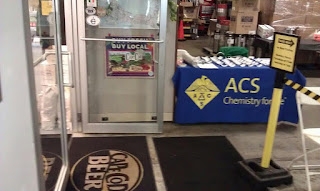"SERMACS 2011 features a wide variety of symposia. In addition to analytical, biological, computational, inorganic, organic and physical chemistry symposia... specialized topics are also scheduled" including Social Media in Science.
The
following is my invited abstract which has been accepted for
presentation on Wednesday afternoon October 26, 2011 in the Social Media
in Science Symposium at SERMACS 2011.
Title:
| 49 - The value of a Facebook business page | ||
| Authors: Jennifer L. Maclachlan, | ||
| Presentation Time: 4:15 PM | ||
| Location: Omni Richmond Hotel | ||
| Room: Roanoke | ||
Abstract Body: Is there value in a Facebook business page? Yes. Are metrics available? Yes. I will present a case study of my
small chemical business and how we have grown our Facebook business page
from having only employees "liking" us to having customers, friends and
other industry professionals interact with us on our Facebook business
page. Studying our Facebook analytics assists us in providing followers
and others (searchable on Google) to read and share our content. I
will discuss how we leverage social media via our Facebook page to create
and share content from our blogs related to our business, enhancing our
monthly E-Newsletter campaign via Constant Contact, our cooperation with local universities
and our chemistry outreach by using the original Facebook posts to share
to other social media vehicles such as Twitter and Linked-In.






































